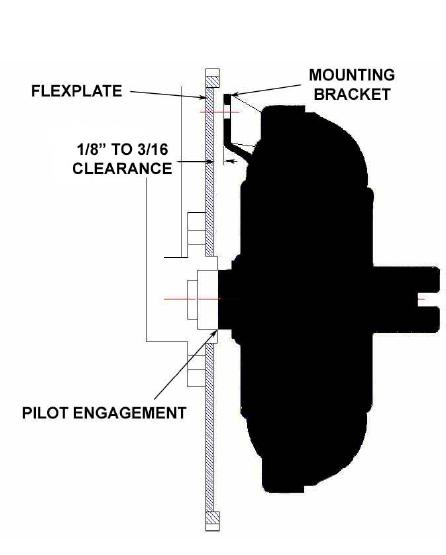I adjusted them in static condition at zero lash plus 1/2 turn, then at some point previously
I went thru all the adjustments and backed off another 1/4 turn , so final is zero plus 1/4 turn.
BTW, my original adjustments were done ONE cylinder at a time, so I rotated the crank and
at EVERY 90° I set the next cylinder in this order 1-8-4-3-6-5-7-2.
I've checked at both ends of SP wires to make sure they are right.
Not sure what the TC would to do with my problem.
I'm sure Grumpy will support this with documentation:
Rick, here is the 100% absolutely guaranteed precise rocker setting method. More accurate than the 90 degree and EOIC methods.
Does not matter how wild or mild the camshaft.
2 cylinders are at TDC at the same time - 1 is firing, the other is exhausting.
This is for an engine with a 18436572 firing order.
Let's start with cyl #1. #6 is it's opposite. Then 8 & 5, 4 & 7, and 3 & 2.
Rotate the crank until cyl #1 exhaust valve is at MAX lift.
That means that cyl #6 exhaust valve is exactly 180 degrees opposite - guaranteed to be on the base circle.
Adjust valve clearance for #6 exhaust. Then you do the same for the rest.
This whole procedure can be used to set the valves for the entire engine in only 2 crankshaft revolutions.
Here's how: Most camshafts have their max valve lifts happen between 107 and 117 degrees, plus or minus a few degrees.
Look at the attached cam card.
http://www.cranecams.com/product/cart.php?m=product_detail&p=23791
Notice at the bottom it says max lift - intake 107, exhaust 117. 112 would then be the middle.
We will use 110 because that is an easier number to deal with.
And 1 valve will be at it's max lift every 45 degrees after that in crank rotation.
So what you want to do is mark your harmonic balancer with 8 dots 45 degrees apart with the first dot being at 110 degrees ATDC.
Think of an apple pie cut into 8 equal pieces. This is relatively easy to do with a degreed outer ring.
I will do the math for you - mark a dot at these degree marks: 20, 65,
110, 155, 200, 245, 290, & 335.
Now rotate your crank to the 20 degree dot. Look at the
intake lifter or rocker arm for cylinders 2 & 3.
One of them is going to be at max lift, the other will be exactly 180 degrees opposite or min lift.
You can now go ahead and adjust your rocker arm for the one at MIN lift.
Now rotate the crank to your 65 degree dot. This time you will be looking at the
exhaust for cylinders 4 & 7.
Again, one will be at MAX lift, the other will be at MIN lift. Adjust the one at MIN lift.
Here is the (hopefully) easy chart to follow:
Follow either page 1 or page 2 depending on which lifter you started with was at MAX lift.
Remember, it takes 2 full rotations of the crankshaft to fire all 8 cylinders.





